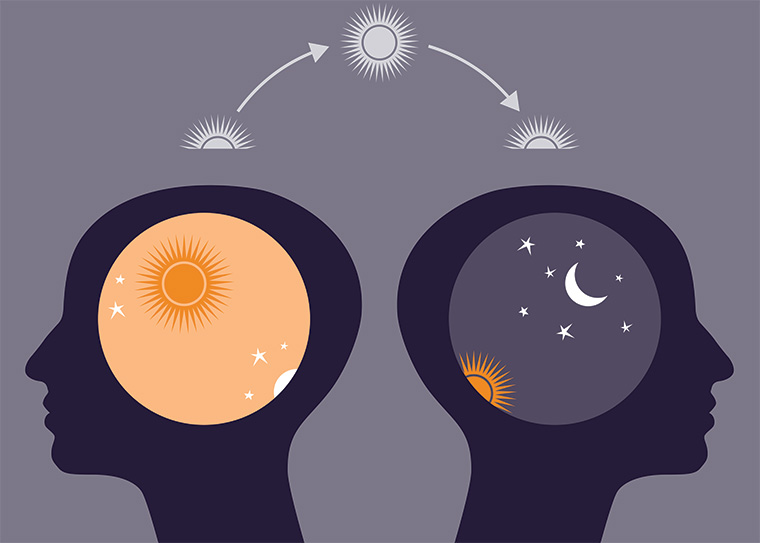2024-07-24 ワシントン大学セントルイス校

(Image: Shutterstock)
<関連情報>
- https://source.wustl.edu/2024/07/daily-rhythms-depend-on-receptor-density-in-biological-clock/
- https://www.pnas.org/doi/10.1073/pnas.2400339121
GABAA受容体サブユニットの組成が、視交叉上核における休息覚醒の概日リズムと細胞間の同期を制御する GABAA receptor subunit composition regulates circadian rhythms in rest–wake and synchrony among cells in the suprachiasmatic nucleus
Daniel Granados-Fuentes, Peter Lambert, Tatiana Simon, +1, and Erik D. Herzog
Proceedings of the National Academy of Sciences Published:July 24, 2024
DOI:https://doi.org/10.1073/pnas.2400339121
Significance
The hypothalamic suprachiasmatic nucleus (SCN) synthesize, release, and respond to γ-aminobutyric acid (GABA), but the role of their GABA receptor subtypes is unknown. We recorded clock gene expression or firing rate from SCN neurons after either knocking down or mutating the γ2 or δ GABAA receptor subunits because they classically mediate tonic or phasic inhibitory neurotransmission, respectively. We found that either of these GABAA receptor subunit types was necessary to maintain synchrony among circadian neurons and daily rhythms in rest–wake behavior. Overexpression of either of these receptor subunits compensated for the loss of the other. We conclude that the density of GABAA receptors sets the phase relationships among circadian SCN neurons to coordinate daily behaviors.
Abstract
The mammalian circadian clock located in the suprachiasmatic nucleus (SCN) produces robust daily rhythms including rest–wake. SCN neurons synthesize and respond to γ-aminobutyric acid (GABA), but its role remains unresolved. We tested the hypothesis that γ2- and δ-subunits of the GABAA receptor in the SCN differ in their regulation of synchrony among circadian cells. We used two approaches: 1) shRNA to knock-down (KD) the expression of either γ2 or δ subunits in the SCN or 2) knock-in mice harboring a point mutation in the M2 domains of the endogenous GABAA γ2 or δ subunits. KD of either γ2 or δ subunits in the SCN increased daytime running and reduced nocturnal running by reducing their circadian amplitude by a third. Similarly, δ subunit knock-in mice showed decreased circadian amplitude, increased duration of daily activity, and decreased total daily activity. Reduction, or mutation of either γ2 or δ subunits halved the synchrony among, and amplitude of, circadian SCN cells as measured by firing rate or expression of the PERIOD2 protein, in vitro. Surprisingly, overexpression of the γ2 subunit rescued these phenotypes following KD or mutation of the δ subunit, and overexpression of the δ subunit rescued deficiencies due to γ2 subunit KD or mutation. We conclude that γ2 and δ GABAA receptor subunits play similar roles in maintaining circadian synchrony in the SCN and amplitude of daily rest–wake rhythms, but that modulation of their relative densities can change the duration and amplitude of daily activities.


